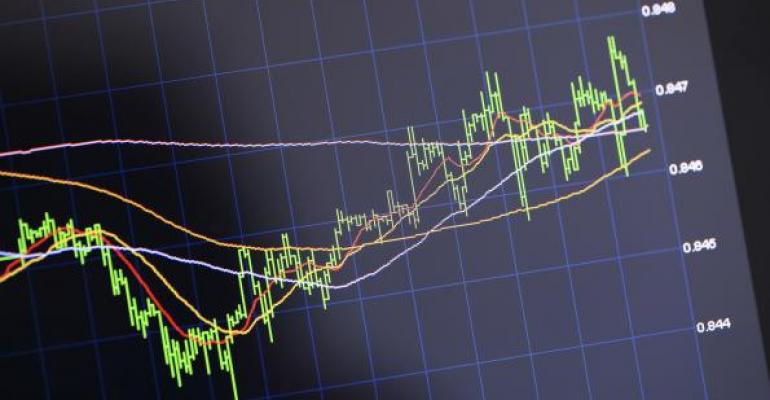We’re now six months into the new administration and seeing enthusiasm for the Trumpian utopia of slashed taxes and steroidal GDP growth seemingly waning. That’s if yield spreads are any guide. It’s the premium of the 10-year T-note yield over the S&P 500 dividend payout, in particular, that’s sending signals.
You can see the recent yield premium traced by the black line in the chart below. The red dashed line is the premium’s 200-day moving average.

For most of 2016 the yield premium was negative, meaning blue-chip stock dividends were higher than Treasury yields. Historically, that’s an anomaly. But then, the insatiable demand for Treasury securities in the wake of the 2008 financial crisis has few historical precedents. That appetite is but one contributory factor for negative premiums; there are others. We’ll get to those momentarily. A little history first.
On a month-by-month basis, the yield premium’s dipped into negative territory three times recently: December 2008 through March 2009, September 2011 through April 2013 and, as noted above, through most of 2016. Aside from those rather shallow excursions, the yield premium’s stayed above water—sometimes loftily—going back to the Eisenhower administration. Since 1980, the premium’s averaged 3.62 percent. That’s a positive number—T-note yields above S&P dividends. Since the peak of the inflationary cycle in 1981, though, the yield premium’s been collapsing. It’s now just 36 basis points (0.36 percent). The chart below illustrates the premium’s long-term trend.

The breakdown in the yield premium is largely a function of demand—both market and central bank—for Treasury securities and the resultant pressure on interest rates. Adding to the effect of the Fed’s accommodation during the Greenspan and Bernanke years, stock dividends have also been squeezed, in large part by the rise in the technology sector. New tech firms eschewed dividends in order to fund their growth. As the size of the tech sector grew, stock dividends shrank.
Now we’re at an inflection point. Or close to it. In the short term, the yield premium’s falling toward its 200-day moving average. The average serves as both support and resistance for the premium’s trends. A downward penetration would likely signal a move toward zero—and perhaps beyond.
So why should we care about the spread? Because it’s a cyclical economic indicator.
If a company’s return on equity exceeds its weighted average cost of capital, money’s cheap and the firm will be incentivized to borrow money, even to finance stock repurchases and shareholder dividends. The effect? Discounting in the yield premium. Of course, the ultimate discounts are typically found in a deep recession.
If, on the other hand, borrowing costs are pushed up by inflationary expectations, companies are more likely to respond by slashing dividends. To boot, note holders are apt to reduce their positions or shorten their maturities. The dual effect of upward pressure on longer-term interest rates and lower dividend yields would push the premium upward.
That said, is the yield premium headed north or south now? The momentum’s negative now, but if you’re planning a significant portfolio move, it might pay to hold off a while to see if support for the yield spread holds.
Stay tuned.
Brad Zigler is WealthManagement's Alternative Investments Editor. Previously, he was the head of marketing, research and education for the Pacific Exchange's (now NYSE Arca) option market and the iShares complex of exchange traded funds.




